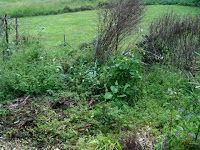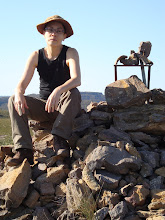 |
| Jessica and Bob at Byron Markets |
 |
| Bob and Jessica and Bob's splendid market stall |
 |
| Jessica and Bob at Byron Markets |
 |
| Bob and Jessica and Bob's splendid market stall |
 |
| The entire spread |
 |
| Tess's Mock Turkey Pate with Cranberry Sauce |
 |
| Zucchini Fettucine with mango and tomato sauce |







This morning we stopped for breakfast at Wises Fig Farm. One of the original farms in the area it has been a fruit farm for three generations. Although it is nearly the end of the season, their Black Genoas are simply the best I have tasted, and let’s face it, nothing tastes better than a ripe fig picked that same morning. We arrived just in time to get a box of their “jam” figs. We’re talking 4-plus kgs of very ripe, squishy delicious fresh figs, picked at 6am that morning and not even been in the fridge long enough to chill.
There are two varieties being picked at Wises right now; the Black Genoa and the Brown Turkey. I liken the flavour of the Brown Turkey as the reisling of the fig world, whereas the Black Genoas have a full body, rich flavour - more like the pinot of figs. Oh yum!
Wises used to do pick your own, for a range of fruits, but bureaucracy and the Sunshine Motorway development has curbed that. In it’s heyday, the farm had a fresh fruit stall, café and PYO operation. However the government wanted to double their rates, re-zoning them from farm land to “tourism”. So they shut up the shop, ceased the pick-your-own and re-focussed their efforts onto growing the best ever figs.
Parts of the original farm, which used to go down as far as where the Sunshine Plaza now is, have since been sold. Firstly to make way for the Sunshine Motorway, which now runs along the border of the farm. And more recently, the Wises sold off a block of land to developers. As a result, the entrance to the farm is discreetly tucked away at the back of a swish-looking housing estate off Wises Road. Despite that, a growing number of locals seem to know where to find the farm.
Picking starts at 6am. They use no pest control, other than biological controls for fruit fly. So pickers compete with the birds for the ripest figs. Figs are packed into punnets of about 1kg and popped in the fridge in the shed. Sales operate on an honesty box system and it is definitely good to get there early for the large $20 boxes of jam figs. A little squishy, they definitely need eating the same day. But we had no trouble doing that! The wises have two stands of fig trees. The older ones are about 10 years old, and due to the increased popularity of their figs, they’ve found a need to plant more trees to keep up with demand. The younger trees have been in the ground for about 4 years.
Do what you can, where you are, with what you have.
Teddy Roosevelt.
